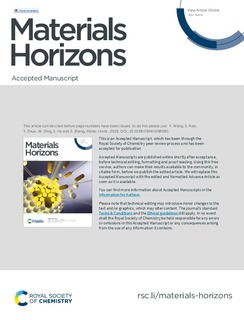Liquid layer generator for excellent icephobicity at extremely low temperature
Journal article, Peer reviewed
Accepted version

Åpne
Permanent lenke
http://hdl.handle.net/11250/2603836Utgivelsesdato
2019Metadata
Vis full innførselSamlinger
Originalversjon
10.1039/C9MH00859DSammendrag
Progress in icephobicity has been made in recent years. However, the majority of the icephobic surfaces reported are relying on mechanisms of static nature, and maintaining low ice adhesion of these surfaces at extreme temperature as low as -60 ℃ has been challenging. Dynamic anti-icing surfaces, that can melt ice or change the ice-substrate interfaces from solid to liquid phase after the formation of ice serves as a viable alternative. In this study, liquid layer generators (LLGs), which can release ethanol to the ice-solid interface and convert ice-substrate contact from solid-solid to solid-liquid-solid mode were introduced. Excellent icephobicity on surfaces with an ethanol lubricating layer is found to withstand extremely low temperature (-60 ℃) by both molecular dynamic simulations and experiments. Two prototypes of LLG, one by packing ethanol inside and the other by storing replenishable ethanol below the substrate, are fabricated. The LLGs are able to constantly release ethanol for maximally 593 days without source replenishing. Both prototypes demonstrate super-low ice adhesion strength of 1.0~4.6 kPa and 2.2~2.8 kPa at -18 ℃. For selected samples, by introducing interfacial ethanol layer, ice adhesion strength on the same surfaces unprecedented decreased from 709.2~760.9 kPa to 22.1~25.2 kPa at low temperature of -60 ℃.